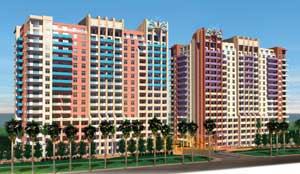Parking Challenges Parking is always an expensive line item. Structured parking requirements, in particular, are a primary driver of the overall structure and cost of the building. Typical structured parking configurations fall into three categories: parking under the tower, parking adjacent to the tower, and a combination of the two where the parking garage is butted up to the tower with some parking occurring within the tower.
Adjacent parking is the simplest and least costly. Structural issues related to the rest of the building are eliminated and construction can happen simultaneously with the high-rise.
Options for this type of parking structure include cast-in-place or pre-cast concrete or steel frame with a light-weight concrete deck. While the construction costs are less, adjacent parking requires more land, and residents can’t access their home as conveniently.
The most costly parking occurs directly under the tower. High-rise construction and life safety elements for the tower must extend through the parking structure. Cost savings occur when the column structure is designed to avoid the need for a change in the structural grid between the parking below and the residential units above.
This requires using an efficient structural bay, typically 18 feet or 27 feet, that meets both parking and residential unit layout requirements. At Dominion Post Oak, 238-unit project in Houston‘s Galleria area being developed by Chicago-based Whiteco Residential, the 37,000-square-foot site demanded this approach.
Column-and-plate buildings, such as Dominion Post Oak, generally achieve this goal easily. But it’s also possible to have residential units over parking by using the tunnelform system.
The tunnels on parking levels can be constructed with a series of cut-away sections, creating drive aisles and visibility into parking spaces. The tunnels will then rise up and through the residential portion of the building in an efficient manner that eliminates any need for a structural transfer deck.
At Merritt on the River in Norwalk, Conn., a 227-unit community developed by Building and Land Technology based in Norwalk, this concept produced savings of about $1 million in construction cost by eliminating the need for the typical and costly transfer deck.
